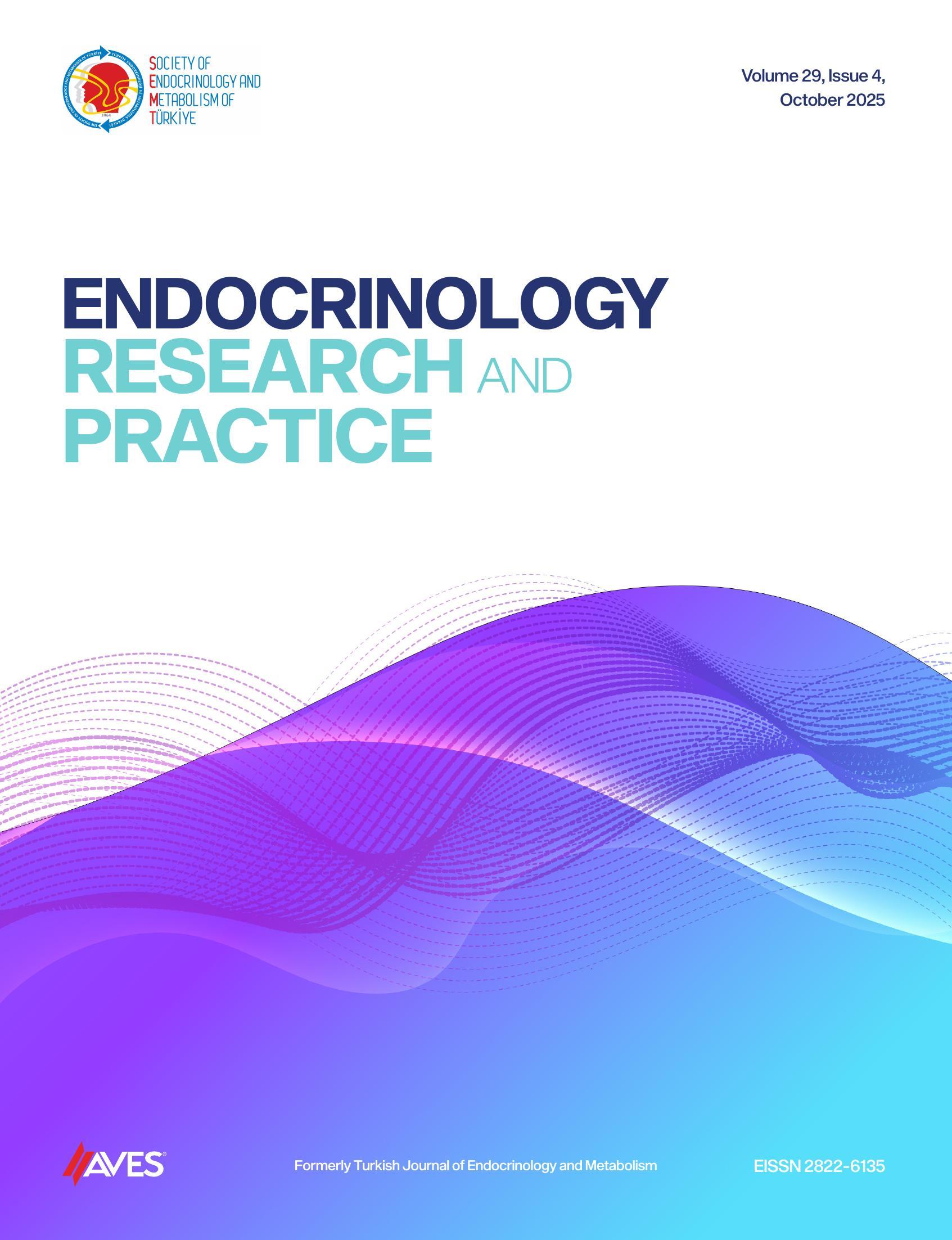Objective: It was previously shown that the levels of several biomarkers increase due to acromegaly disease-related inflammation, and some markers are parallel to the disease’s activity. The current study compared the possible relationship of growth differentiation factor-15 (GDF-15) with acromegaly disease activity in healthy subjects.
Methods: This case–control study was conducted in a single center. It included 40 acromegaly patients (25 active/15 controlled) (47.7 ± 9.4 years, 20 female/20 male) and 24 healthy individuals (49.9 ± 10.1 years, 13 female/11 male) with age–sex–body mass index similar to the patient group. Demographic data, metabolic and hormonal parameters, and GDF-15 levels of the study population were studied.
Results: The median GDF-15 levels were significantly higher in patients with acromegaly compared to healthy subjects (HS) (280.4 (Q1-Q3: 197.0-553.2) vs. 213.3 (Q1-Q3: 179.9-297.2) ng/L, P = .01). Serum GDF-15 levels of active and controlled acromegaly patients were comparable (P = .39). Interestingly, compared to HS, GDF-15 levels were significantly higher in controlled disease (P = .013), whereas GDF-15 levels tended to be higher in active disease but did not reach statistical significance (P = .06). Growth differentiation factor-15 levels were positively correlated with fasting plasma glucose (r = 0.304, P = .01) and HbA1c (r = 0.292, P = .02). When evaluated across the entire cohort, GDF15 levels were found to be higher in diabetic patients compared to non-diabetic individuals (P = .04).
Conclusion: Plasma GDF-15 levels were increased in the patients with acromegaly compared to healthy subjects. This increment may be due to accompanying diseases such as diabetes rather than a disease-specific effect.
Cite this article as: Bostan H, Hepşen S, Gül Ü, et al. Growth differentiation factor 15 in patients with acromegaly: A case–control study. Endocrinol Res Pract. 2024;28(3):138- 142.

-1(1).png)

.png)